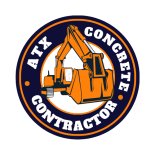Concrete cutting is an intricate process integral to construction and renovation projects. Whether it’s creating openings for doors and windows, modifying structures, or handling repairs, understanding the techniques, tools, and safety measures involved in concrete cutting is essential. This comprehensive guide aims to demystify the intricacies of this process, shedding light on its various aspects.
Understanding the Basics
Concrete cutting refers to the controlled removal or penetration of concrete structures using specialized tools and techniques. It’s performed to create precise openings, modify shapes, or to demolish sections of concrete for repair or remodeling purposes.
Diamond Sawing: Utilizing diamond-embedded blades, this technique is the most common method for precision cutting. It includes:
Flat Sawing: Cutting horizontal surfaces such as floors, bridge decks, and pavement.
Wall Sawing: Cutting vertical surfaces like walls or door openings.
Wire Sawing: Employing a diamond wire to cut through heavily reinforced concrete.
Core Drilling: Employing a cylindrical drill bit to create precise holes in concrete for plumbing, electrical, or HVAC installations.
Tools Used in Concrete Cutting
Diamond Blades: Diamond blades are crucial tools in the concrete cutting process. These blades consist of industrial-grade diamonds bonded to a steel core. They come in various types for different applications: segmented rims for fast cutting, continuous rims for smoother cuts, and turbo rims for a balance between speed and precision.
Wall Saws and Flat Saws: Wall saws and flat saws are heavy-duty power tools used for cutting concrete. Wall saws are mounted on tracks for vertical cutting, while flat saws are used for horizontal surfaces. These saws can be powered by electricity, hydraulics, or gasoline, depending on the job requirements.
Core Drills: Core drills, equipped with diamond-tipped bits, are used for creating precise holes in concrete. They come in handheld or rig-mounted versions, enabling accurate hole drilling for various purposes.
Safety Measures in Concrete Cutting
Wearing appropriate PPE is crucial: Safety Glasses/Goggles: Protects the eyes from debris and dust.
Ear Protection: Guards against the loud noise generated by cutting tools. Respirators/Masks: Shields against inhaling concrete dust, which can be harmful.
Proper Ventilation: Concrete cutting produces dust and fumes, necessitating adequate ventilation to maintain air quality on the job site. Using exhaust systems or fans helps in controlling airborne particles.
Training and Experience: Workers must undergo proper training and have experience in handling concrete cutting tools and equipment. Understanding the techniques and safety protocols significantly reduces the risk of accidents.
Complete Process Of Concrete Cutting
Evaluate the Concrete Structure: Assess the thickness, reinforcement, and any potential obstacles within the concrete. Identify Cut Lines: Determine the precise locations for cutting based on blueprints or project requirements. Clear the Area: Remove debris and ensure the work area is free of obstructions.
Secure the Site: Erect barriers or cautionary signs to prevent unauthorized access. Select the Appropriate Sawing Technique: Decide between flat sawing, wall sawing, or wire sawing based on the type of cut required (horizontal, vertical, or complex shapes). Determine Hole Size and Location: Mark the precise spots where holes are to be drilled for installations or modifications. Mount the Diamond Blade: Ensure it’s securely fixed and suitable for the specific cutting technique.
Setup Wall or Flat Saw: Position the saw on tracks or mounts for stability and accuracy. Select the Correct Core Drill Size: Use the appropriate drill bit size for the required hole diameter. Setup and Secure the Drill: Ensure the drill is firmly in place for accurate drilling. Start the Saw: Power up the saw and gradually bring it into contact with the concrete surface.
Controlled Cutting: Maintain a steady pace, adjusting for any resistance or variations in the concrete density. Cooling and Lubrication: Use water or specialized cooling agents to prevent overheating of the blade and control dust. Position the Drill Bit: Align the drill bit precisely over the marked spot on the concrete. Begin Drilling: Start drilling at a slow and steady pace, applying moderate pressure.
Clearing Debris: Periodically remove drilled cores or debris to ensure smooth drilling. Workers Gear Up: Ensure all personnel involved wear appropriate PPE like goggles, ear protection, masks, and gloves. Use Exhaust Systems or Fans: Maintain proper ventilation to control airborne concrete dust and fumes.
Clear Debris: Remove leftover concrete pieces, dust, and debris from the work area. Inspect the Cuts: Ensure the cuts meet the required specifications. Clean and Store Tools: Properly clean and store the cutting tools and equipment for future use.
Conclusion
Concrete cutting is a critical aspect of construction and renovation projects, demanding precision, expertise, and safety precautions. By comprehending the techniques, tools, and safety measures involved, one can ensure efficient and safe concrete cutting processes.
In essence, this comprehensive guide sheds light on the multifaceted nature of concrete cutting, emphasizing its significance in the realm of construction and the necessity of adhering to safety protocols for a successful outcome.
